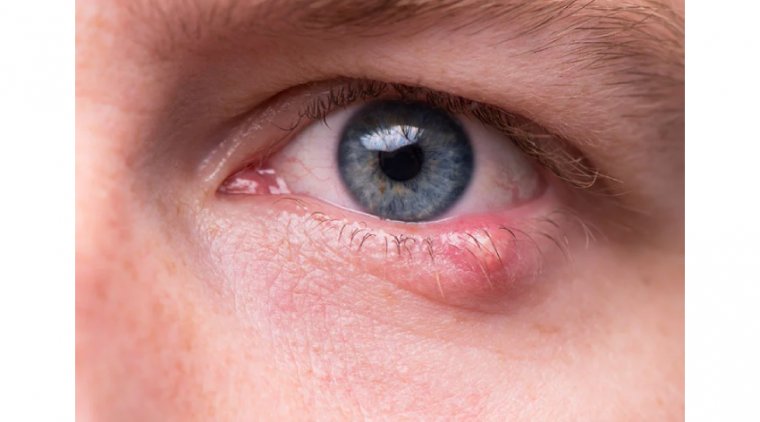
2023 Recap: Top 10 Novel Smart Contact Lenses and Technologies
In the ever-evolving landscape of ophthalmology, 2023 has proven to be a year of groundbreaking advancements in contact lens technology. From lenses that adapt to UV and temperature changes to intelligent lenses capable of diagnosing and treating glaucoma, the top 10 contact lenses and technologies of the year are reshaping the way we perceive eye care.
1. Smart Contact Lens for Diagnosing and Treating Glaucoma
.jpg)
A wireless theranostic smart contact lens, developed by a research team at POSTECH, integrates an intraocular pressure (IOP) sensor and a flexible drug delivery system for simultaneous monitoring and control of IOP measurement and drug administration in glaucoma.
The IOP sensor utilizes hollow gold nanowires and is seamlessly combined with a flexible medication delivery system, a wireless power and communication system, along with an application-specific integrated circuit chip. This comprehensive design enables the smart contact lens to effectively monitor and regulate intraocular pressure in individuals with glaucoma.
Anticipated to facilitate personalized glaucoma treatment with maximum effectiveness and minimal side effects, the innovative smart contact lens is designed to offer a feedback mechanism. This feature is not limited to smart contact lenses but can also be utilized with other wearable devices.
Click here to learn more about the wireless theranostic smart contact lens.
2. Contact Lens to Prevent Dry Eye Disease
.jpg)
A collaborative team at the Terasaki Institute for Biomedical Innovation (TIBI) has successfully developed a prototype of a contact lens tailored specifically to address contact lens-induced dry eye (CLIDE). The innovative lens tackles this condition by facilitating tear flow through the natural mechanism of eye blinking.
The approach employed by the TIBI team involves a contact lens design featuring microchannels, strategically designed to enhance tear flow mobility and prevent dry eye. Importantly, the process doesn't require any external devices, as the necessary pressure is generated through the natural act of eye blinking.
In creating their contact lens prototype, the researchers utilized a time-efficient technique. The lens mold, composed of a silicone polymer mixture, allowed for the easy removal of the cast lens by gently bending the mold. This streamlined process contributes to the efficiency of the lens development.
Click here to learn about the innovative lens.
3. Smart IOL that Can Diagnose Alzheimer’s Disease
.jpg) Scientists in Korea have pioneered a smart intraocular lens designed for early-stage Alzheimer's disease diagnosis. Their research focused on the eye's characteristics, directly linked to the brain, uncovering various biomarkers.
Scientists in Korea have pioneered a smart intraocular lens designed for early-stage Alzheimer's disease diagnosis. Their research focused on the eye's characteristics, directly linked to the brain, uncovering various biomarkers.
The hydrogel pattern, binding with antibodies, contracts when interacting with the target biomarker. Detection relies on moiré signal changes, generated as the narrowed hydrogel pattern overlaps with the designated reference grid. This moiré signal-based method offers heightened sensitivity compared to techniques directly monitoring hydrogel pattern changes.
Moreover, this biomarker detection approach using moiré signals may identify biomarkers without the need for electrochemical or fluorescent labels, distinguishing it from conventional biosensors. A notable advantage of this technology is its internal placement capability, as it operates without external power or a light source.
Click here to learn about the innovative lens.
4. Low-Cost Contact Lenses for Color Blindness
.jpg) As reported in Macromolecular Materials and Engineering, researchers from Khalifa University have recently developed color-blind-correcting contact lenses. Utilizing advanced 3D printing and an economical dye, the lenses are designed to filter light and enhance color vision.
As reported in Macromolecular Materials and Engineering, researchers from Khalifa University have recently developed color-blind-correcting contact lenses. Utilizing advanced 3D printing and an economical dye, the lenses are designed to filter light and enhance color vision.
The creation involves a biocompatible hydrogel material, forming a water-retaining solid network, combined with a pink ink absorbing light in wavelengths problematic for red-green color blindness. The lenses are shaped using mask stereolithography apparatus (MSLA), an efficient 3D printing technology enabling rapid, high-quality production at a low cost.
After the printing process, the team measured the light transmission in the pink lenses and verified their capacity to obstruct light between 525 and 575nm—the range where the pink ink absorbs light. Furthermore, the team illustrated that the pink lenses consistently preserve this light-filtering characteristic over time, even when stored in water or contact lens solutions commonly employed for disposable lenses.
Click here to find out how the novel contact lens works.
5. UV and Temperature-Responsive Lenses
.jpg)
Khalifa University's research team, led by Professor Haider Butt and Ph.D. student Ahmed Salih from the Department of Mechanical Engineering, has introduced cutting-edge UV protective contact lenses.
Leveraging smart materials such as photochromic and thermochromic powders, these lenses exhibit distinctive optical characteristics that vary depending on their activated and inactivated states. The photochromic powders respond to UV radiation by modifying their structure, while the thermochromic powders react to temperature changes. This integration into lenses presents a streamlined and cost-effective approach to address and potentially prevent various eye conditions.
Click here to explore more about the cutting-edge UV protective contact lenses.
6. Tear-Generated Battery for Smart Lenses
.jpg)
Nanyang Technological University, Singapore (NTU Singapore), has developed an ultra-thin, flexible battery with a thickness comparable to the human cornea. This groundbreaking battery, designed to store energy when immersed in a saline solution, holds the potential to power future smart contact lenses.
Crafted from biocompatible materials, the NTU battery eliminates the need for wires or harmful heavy metals commonly found in lithium-ion batteries or wireless charging systems. Its unique glucose-based coating interacts with sodium and chloride ions in the surrounding saline solution, using the water within the battery as a conduit for electricity generation.
7. Navigation Function for 3D-Printed Smart Contact Lens
.jpg) Dr. Seol Seung-Kwon's Smart 3D Printing research team at KERI, in collaboration with Professor Lim-Doo Jeong's team at Ulsan National Institute of Science and Technology (UNIST), has jointly unveiled an innovative core technology for smart contact lenses. These lenses, capable of implementing augmented reality (AR)-based navigation, were produced using an advanced 3D printing process.
Dr. Seol Seung-Kwon's Smart 3D Printing research team at KERI, in collaboration with Professor Lim-Doo Jeong's team at Ulsan National Institute of Science and Technology (UNIST), has jointly unveiled an innovative core technology for smart contact lenses. These lenses, capable of implementing augmented reality (AR)-based navigation, were produced using an advanced 3D printing process.
The KERI-UNIST collaboration marks a significant breakthrough in developing technology that brings augmented reality (AR) to life by printing micro-patterns on a lens display through a 3D printer, eliminating the need for voltage. The key to this accomplishment lies in the meniscus of the ink used in the process. This involves the formation of a curved surface on the outer wall, preventing water droplets from bursting due to capillary action when gently pressed or pulled with a specific pressure.
Click here to learn more about the innovative core technology.
8. Xpanceo Raises $40M for World's First Smart Contact Lenses
.jpg)
XPANCEO has successfully raised $40 million in seed funding to launch revolutionary contact lenses equipped with augmented reality (AR) vision capabilities. These funds will be strategically allocated towards advancing the development of the next prototype, aiming to incorporate multiple features within a single device.
Positioned as the world's first ultra-thin lens, this state-of-the-art device seamlessly harmonizes with the wearer's natural vision. Crafted from advanced optical materials, including low-dimensional and van der Waals materials, it achieves record-breaking refractive indices and anisotropy while preserving exceptional optical properties.
Click here to explore the novel contact lens equipped with AR vision capabilities.
9. Azalea Vision's Novel Smart Contact Lens - ALMA
.jpg)
Azalea Vision has unveiled the successful demonstration of the ALMA Lens, marking the premiere of the initial functional prototype for the Azalea smart contact lens platform. The ALMA proprietary device offers a non-surgical solution for individuals dealing with conditions like keratoconus, corneal irregularities, photophobia, and presbyopia.
Incorporating an embedded diaphragm with a modulatable aperture for controlling light entry into the eye, Azalea's ALMA Lens introduces a pioneering solution. This innovative design integrates liquid-crystal technology, a microchip, an RF antenna, a medical-grade micro-battery, and configurable light control.
The user-friendly and programmable nature of this smart lens empowers both patients and physicians to implement personalized therapy, significantly enhancing visual acuity without resorting to intraocular surgery.
Click here to find out more about the ALMA lens.
10. Shamir Insight Introduces Driver Intelligence Lens Technology
.jpg)
Shamir Insight has unveiled Driver Intelligence, an innovative lens technology crafted to optimize visual performance and deliver unmatched clarity for drivers, ensuring safer journeys throughout the day. The Driver Intelligence package comprises two unique lens models: 'Sun' tailored for daytime driving and 'Moon' designed for low-light or nighttime driving.
These lenses bring a spectrum of visual improvements, enhancing road awareness, lessening cognitive load for improved visual processing, and providing superior physical comfort to minimize eye strain during driving. Additionally, each lens is outfitted with customized, premium coatings for enhanced benefits.
Conclusion
As 2023 draws to a close, these advancements in contact lens technology signal a transformative era in vision care. From addressing common vision impairments to incorporating smart technology for early disease detection, these lenses offer a glimpse into a future where eye care is not only more effective but also more personalized and accessible than ever before.
(1).jpg)










